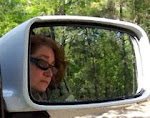So let's tackle the when Jesus was born issue--here are some resources and information I found out about it--but it was doubtful it was on Dec. 25. Most likely, it was in fall, because the shepherds had animals out in the open. However, it could have also been a mild winter.
Here are some comments on the subject.
, J. Hampton Keathley on Bible.org takes a different view:
One of the main objections [to the December birthdate] has been that sheep were usually taken into enclosures from November through March and were not out in the fields at night. However, this is not as conclusive as it sounds for the following reasons: (a) It could have been a mild winter. (b) It is not at all certain that sheep were always brought into enclosures during the winter months. (c) It is true that during the winter months sheep were brought in from the wilderness, but remember, Luke tells us the shepherds were near Bethlehem Bethlehem
He also quotes James Kelso, an archaeologist who spent a number of years living in Palestine, on this issue stating:
"Bethlehem Jerusalem
I tend to file this under it is not as important WHEN we celebrate Christmas, but HOW we celebrate it. Are we lost in commercialization or do we approach it with charity, reverence and joy?
A few more quiz questions"
The sign the shepherds were to look for in identifying Jesus was:
a. a Christmas tree
b. Three wise men
c. A baby lying in an animal feed trough
The answer is: c
--------
And now to the Wise Men....
The “star in the East” was seen by
a. The shepherds
b. Three kings from the Orient
c. Astrologers living in Persia
The answer is C—astrologers living in Persia.
So, even though I'll be the first to admit that I love the carol "We three kings of Orient are" [especially this really cool piano arrangement I have of it] they were actually magi.
My understanding is that magi were also academics, scholars, and astronomers [in addition to astrologers--- many folks get the two mixed up] .
The wise men came to visit Jesus:
a. While Jesus was lying in the manger
b. Just after the shepherds returned to the fields
c. In the house where Joseph and Mary were staying
The answer is c – in the house where Joseph and Mary were staying.
The wise men weren't there the night Jesus was born. Of course, I still have them in my Nativity scene.
And dude, does anyone know why Nativity scenes have two white and one black wise men? Granted, we don't know the ethnicity of them, but I just think it's interesting that it's two white and one black in almost every display I see...what's up with that?




No comments:
Post a Comment